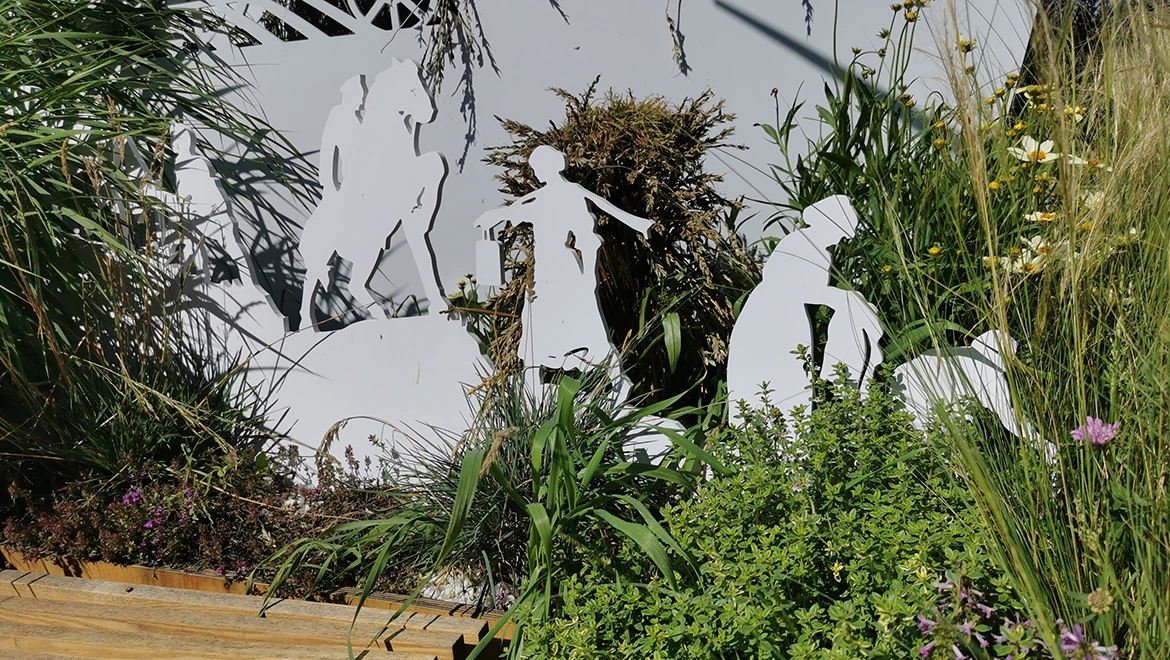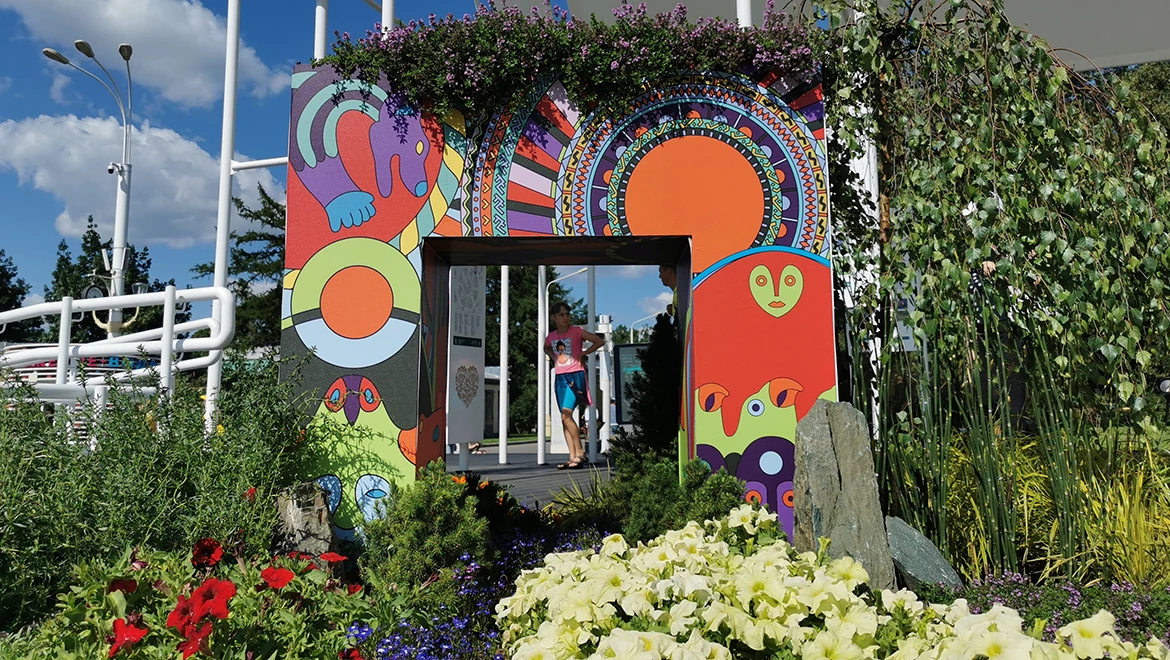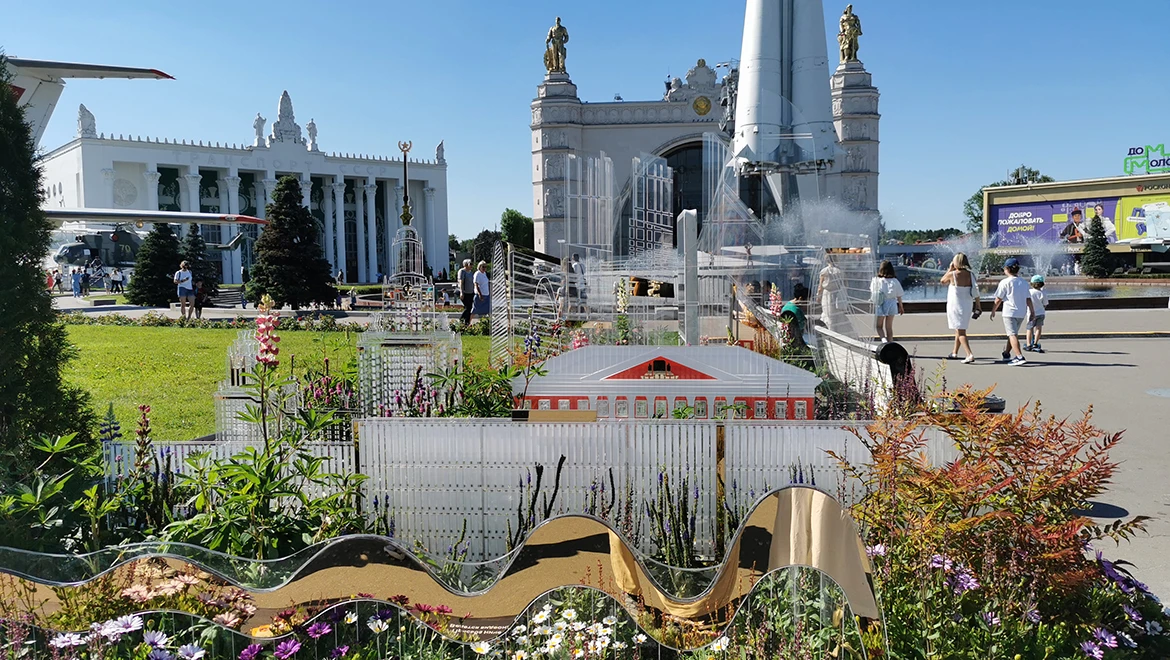Catch fish and see the Astrakhan Kremlin: colorful and unique flowerbeds of the regions at the "Future in Flowers" festival
The RUSSIA EXPO concludes on July 8, and with it, the flower
festival will also come to an end. Don't miss the chance to visit this
wonderful event and see the extraordinary flowerbeds of the regions with your
own eyes. The floral expositions awaits guests at the "Space"
pavilion.
CASPIAN PEARL. ASTRAKHAN REGION
The region's flowerbed highlights its industrial
achievements, the development of the transportation system, and, of course, a
tourist and cargo ship as a symbol of its transport and logistics potential.
The region is a centre of international economic ties for Russia on the Caspian
Sea. Light blue and blue flowers at the base of the exposition symbolize the
Volga River — the longest river in Europe. In its delta, one can see the
region's unique plant — the lotus — and catch another symbol of the area - the
vobla (Caspian roach).
A unique feature of the exposition is augmented animated
reality. It appears when you point your phone at the QR code on the plaque.
Here, you can see bright and juicy watermelons, for which the Astrakhan region
is famous, touch a live sturgeon, watch a real Caspian rose — a Red-listed
lotus — bloom, and see the Astrakhan Kremlin, a unique architectural monument
included in the UNESCO World Heritage list.
UNITY. PERM REGION
In the Perm region flowerbed, not only flowers and plants
play an important role but also a colorful installation in the form of the
letter "P". This symbolizes unity and cooperation: like a bridge over
a river, it connects different communities, cultures and ideas in a single
space.
For the
flower festival, the region chose a special symbolic plant — field horsetail. This
perennial relic plant is widespread in the Perm region. Horsetails appeared on
Earth 400 million years ago. Field horsetail is used in medicine. Its shoots
are rich in microelements, proteins and vitamins. During the Great Patriotic
War, field horsetail saved Perm residents from starvation and disease. This
valuable plant even has a monument dedicated to it. Many delicacies and the famous
Perm pies "posikunchiki" are made from horsetail.
FREE DON. ROSTOV REGION
The Rostov region is a hospitable and colorful area. It was
a former Cossack free territory, the land of ancient Greeks and Khazars, a
historical crossroads between peoples, cultures, and traditions of the West and
East.
The central part of the composition is the art object
"Don-Father". Along the banks of the Don, flower compositions
represent the living nature. Steppes are on one bank, while agriculture is on
the other. The back of the stand features a mini-composition: the riverbank is
designed in the "dry stream" style with small dark stones in the
foreground. The bank is adorned with reeds and sunflowers nearby. In another
corner is a weeping willow with branches reaching "the water".
The composition also features the floral symbol of the region — sage (Salvia from
the Latin "salve", meaning "hello" or "be
healthy"). In the Rostov region, the steppe sage is most common. It
prefers to grow in dry meadows, forest edges and along the edges of roads and
fields. The plant's stem, along with its flowers, can reach up to 60 cm in
height. Sage has healing properties and is used as a spice for cooking.
Along with the RUSSIA EXPO, the flower festival is also coming to an end.
The "Future in Flowers" festival continues at the RUSSIA EXPO, where unique flowerbeds from all regions of our country can be seen at the "Space" pavilion until July 8.
The flower festival continues at the International RUSSIA EXPO.





